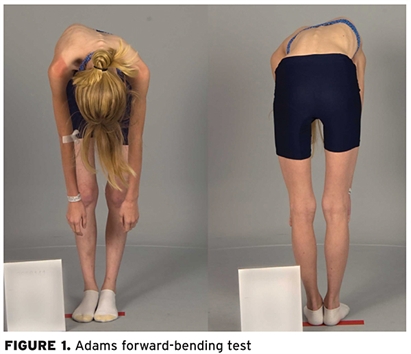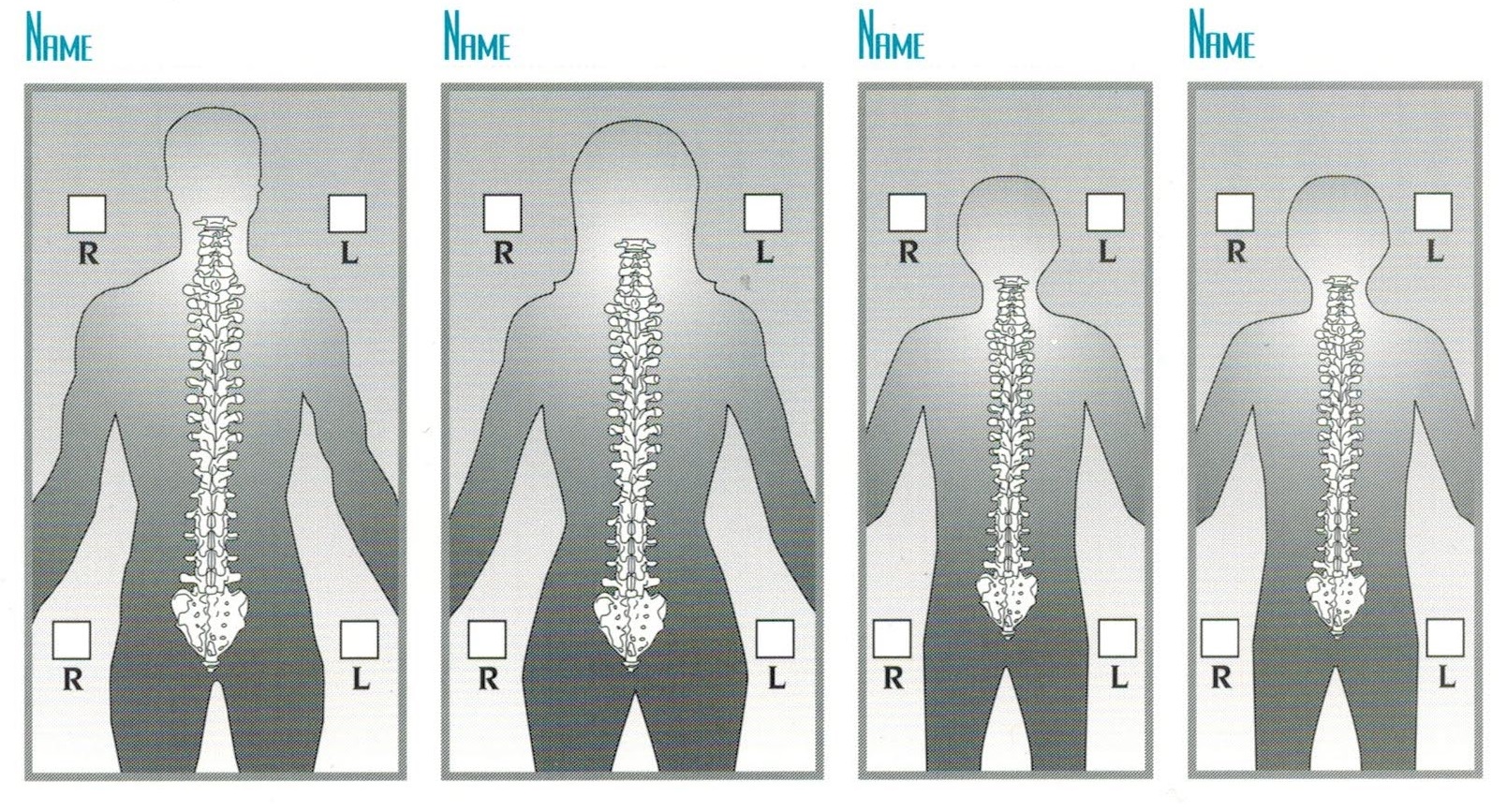How Do You Know if You Have Scoliosis?
In many states school screening for scoliosis is mandatory once a year for all students, but the effectiveness of this approach is still to be determined as many cases of scoliosis remain undiagnosed until the scoliosis progresses to the point of necessary intervention. If you’ve never had a scoliosis exam you may be wondering: Do I have scoliosis?
Scoliosis Symptoms
Often, scoliosis in kids does not have noticeable symptoms. The crooked back may not cause pain, and if it is mild, it can be overlooked. There are several common physical signs that may indicate scoliosis. With more moderate to severe scoliosis, the most obvious sign will be a “crooked back” or “twisted spine”. One of the most common tests for detecting scoliosis is called the Adam’s Forward Bend Test, in which the individual bends from the waist as if touching their toes. This will display one or more of the following signs of scoliosis.
Scoliosis symptoms and signs in children:
- Shoulders are not of the same height (one is higher than the other)
- Head is not centered directly above the pelvis
- Rib Cage is not symmetrical; ribs may be at different heights
- One shoulder blade is higher and more prominent (sticks out more) than the other
- One hip is more prominent or higher than the other
- The individual may lean to one side
- One leg appears shorter than the other
- The waist appears uneven
- Clothes do not fit/hang properly
Scoliosis Symptoms and Signs in Adults:
Symptoms of scoliosis in adults are the same as those in children, but they can also be accompanied by pain in the back and hips cause by the both the long-term effects of untreated scoliosis (the twisted spine putting stress and pressure on the spinal discs, nerves, muscles, ligaments, or facet joints) and by degenerative changes that take place in the adult spine.
Home Scoliosis Assessment
If you suspect that you or your family member has scoliosis there is a simple at-home scoliosis exam you can conduct. This scoliosis exam is not meant to diagnose scoliosis, but to check for visible postural signs that may indicate scoliosis. A full exam must be conducted by a scoliosis specialist to properly diagnose scoliosis.
INSTRUCTIONS:
Click on the image of the posture chart below and print the chart to record findings.
Participant stand with feet shoulder width apart and toes parallel then close your eyes and nod back and forth twice bringing head back to middle. Keep eyes closed for ten seconds while observer checks shoulder and hip levels.
Observer stand facing participant, and lightly place index fingers on participant’s shoulders, noting which shoulder is higher. Then place index fingers on top of participant’s hips and note which hip is higher. Place a check in the appropriate box on the posture chart below to indicate high shoulder and high hip.
**Important: If one of these test areas is positive, there is a likelihood that Scoliosis may exist but can only be confirmed with proper exam.
What is your Next Step?
Bring this posture evaluation test to a scoliosis specialist to correlate the findings. If you suspect that you or your family member has scoliosis or have noticed any of the aforementioned signs, it is important to have an exam conducted by a scoliosis professional for proper diagnosis and possible treatment options. Hudson Valley Scoliosis Correction Center is one of only 18 centers in the world certified to treat Scoliosis with a sophisticated exercise based program. This program is for both mild and severe curves. Research shows that it is best to start this type of treatment as early as possible!
Optimal posture is essential for optimal health for every member of your family. Individuals, young and old, can benefit from treatment aimed at pain elimination, curve stabilization as well as curve reduction in many cases. Many health problems stem from an unhealthy nervous system, which is why it is so vital to regain and maintain optimal spinal health.
All LARGE Scoliosis curves have one thing in common!
They started as small curves…. Get your kids checked as early as possible!


